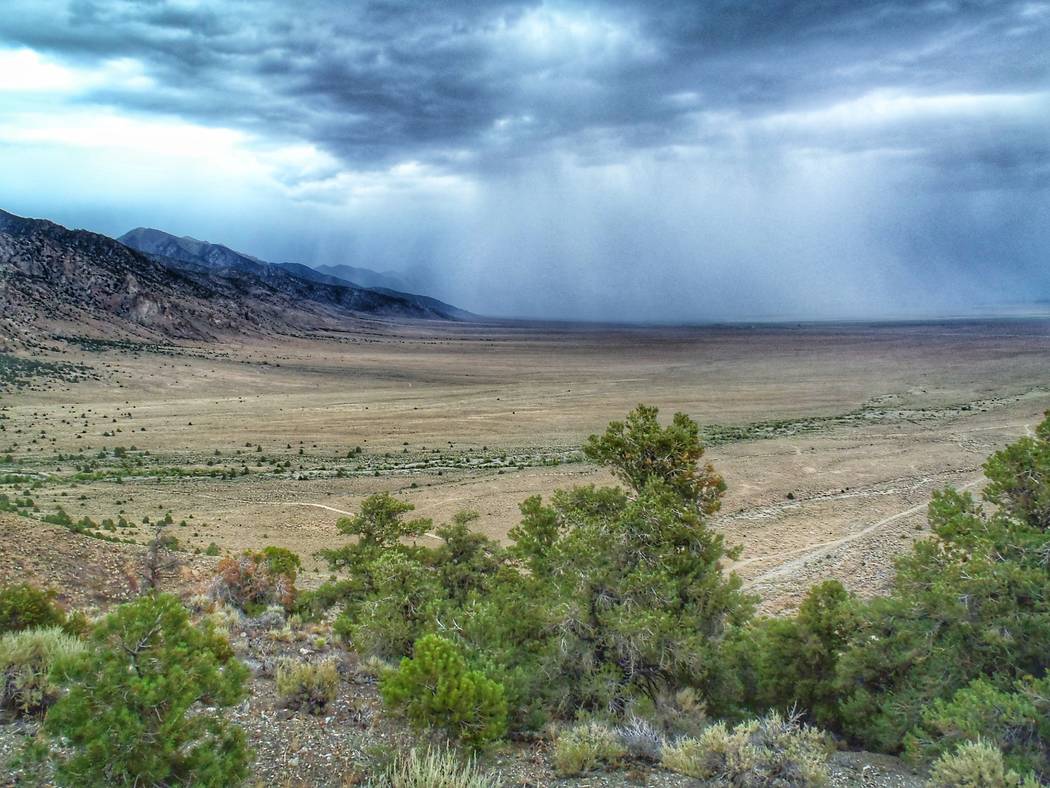Latest BLM oil and gas lease auction in central Nevada draws protest

The federal Bureau of Land Management has scheduled a June 13 auction for new oil and gas leases across almost 196,000 acres in central Nevada.
The response from conservationists: Get the frack out of here.
A coalition of environmental groups will file an administrative protest Thursday in hopes of blocking the online auction and any future fossil fuel development, which they say could contaminate land, air and water in Nevada while contributing to global warming.
The Center for Biological Diversity, Great Basin Resource Watch, the Progressive Leadership Alliance of Nevada, the Sierra Club and the Western Watersheds Project teamed up to submit the protest. Patrick Donnelly, Nevada wildlife advocate for the Center for Biological Diversity, called it a prelude to a possible lawsuit.
Next month’s auction includes 106 parcels in the remote valleys and mountain ranges of Nye, Lander and Eureka counties, but BLM spokesman Christopher Rose said it’s unclear how many of the parcels will actually be leased or developed.
A year ago, the bureau offered oil and gas leases on 74,702 acres in that part of the state. Just over 50,000 acres of that land — 12 of the 42 available parcels — sold during the auction for a combined total of $54,340.
‘Expressions of interest’
Donnelly said the land now up for lease is home to 34 natural springs and 664 acres of wetlands that could be polluted or drained by oil drilling, particularly the extraction method known as hydraulic fracturing or fracking.
He said BLM’s proposed protections for the lease areas are “incredibly weak and vague” and rooted in outdated planning documents that don’t even contemplate fracking.
Environmental advocates also argue that any new oil and gas development on federal land is inconsistent with the nation’s international climate commitments and the broader fight to slow global warming.
Leases like these are “committing the future to more greenhouse gas pollution,” said Taylor McKinnon, point man for the Center for Biological Diversity’s Keep it in the Ground campaign.
Drilling industry groups contend that fracking is heavily regulated to protect the environment and produce fuel, particularly natural gas, that reduces the nation’s dependence on foreign oil.
Two other conservation groups, the Wilderness Society and WildEarth Guardians, are planning their own administrative protests of BLM’s upcoming auction.
Jeremy Nichols, climate and energy program manager for WildEarth Guardians, said he is tracking what appears to be a sudden surge in oil and gas speculation in Nevada, with developers nominating more than 2 million acres of federal land for possible leasing so far this year. Those so-called “expressions of interest” include several parcels just south of Great Basin National Park and several more within the boundaries of Basin and Range National Monument, where new oil development is currently prohibited.
“I work on oil and gas issues across the American West, and I have to say that there seems to be exponentially more industry interest building in Nevada than anywhere else,” Nichols said in an email. “No other state has seen as many expressions of interest and no other state seems on track to auction off as much public lands acreage as Nevada.”
Boom? What boom?
If the Silver State is on the cusp of an oil and gas boom, BLM officials see little evidence of it.
Rose said the size of next month’s auction is “within the range” of other lease sales in recent years and so is the amount of land being nominated for possible future sales.
And just because a developer nominates a parcel doesn’t mean it will be offered for lease, he said. Of the roughly 2 million acres nominated this year, 311,000 have been made available for auction so far.
According to federal records, Nevada was home to 627 oil and gas leases covering approximately 1.1 million acres of federal land in 2016, but only 37 of those leases on 27,000 acres of land produced any oil.
Richard Perry, administrator for the Nevada Division of Minerals, said the amount of land under lease in the state is largely a function of speculation and tends to fluctuate based on the price of oil.
In 2015, oil companies held leases on 2.35 million acres of federal land in Nevada. In 1990, when the state’s oil production hit an all-time high of 4 million barrels, there were more than 7.5 million acres under lease.
Perry said Nevada has never been a major oil producer, and these days it’s “barely on the radar” compared to other states.
Last year, production in Nevada fell to less than 279,000 barrels, its lowest level in at least 30 years. Texas typically produces about 10 times more oil than that in single day, Perry said.
Contact Henry Brean at hbrean@reviewjournal.com or 702-383-0350. Follow @refriedbrean on Twitter.
Want to buy an oil lease?
The Bureau of Land Management auctions off oil and gas leases on qualifying federal land for the annual price of $1.50 per acre for the first five years and $2 per acre after that. Once the leased property begins producing, a 12.5 percent royalty is charged.
Half of the bid and rental receipts go to the state of Nevada.
Leases are typically good for 10 years but can be extended if drilling operations are underway or there is a well associated with the lease that is capable of producing a profit.
The lease will automatically terminate if annual rentals are not paid on time and it doesn’t have a productive well attributed to it.












